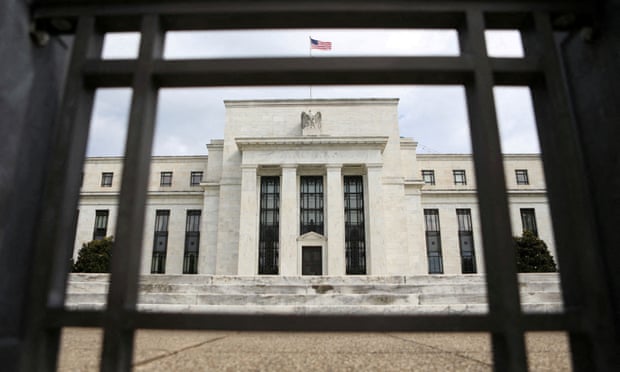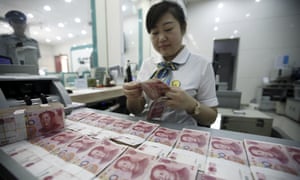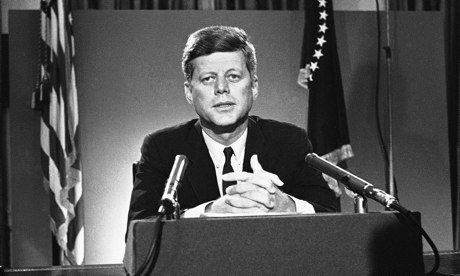One could slash private debt by 100pc of GDP, boost growth, stabilize prices, and dethrone bankers all at the same time. It could be done cleanly and painlessly, by legislative command, far more quickly than anybody imagined.
The conjuring trick is to replace our system of private bank-created money -- roughly 97pc of the money supply -- with state-created money. We return to the historical norm, before Charles II placed control of the money supply in private hands with the English Free Coinage Act of 1666.
Specifically, it means an assault on "fractional reserve banking". If lenders are forced to put up 100pc reserve backing for deposits, they lose the exorbitant privilege of creating money out of thin air.
The nation regains sovereign control over the money supply. There are no more banks runs, and fewer boom-bust credit cycles. Accounting legerdemain will do the rest. That at least is the argument.
Some readers may already have seen the IMF study, by Jaromir Benes and Michael Kumhof, which came out in August and has begun to acquire a cult following around the world.
Entitled "The Chicago Plan Revisited", it revives the scheme first put forward by professors Henry Simons and Irving Fisher in 1936 during the ferment of creative thinking in the late Depression.
Irving Fisher thought credit cycles led to an unhealthy concentration of wealth. He saw it with his own eyes in the early 1930s as creditors foreclosed on destitute farmers, seizing their land or buying it for a pittance at the bottom of the cycle.
The farmers found a way of defending themselves in the end. They muscled together at "one dollar auctions", buying each other's property back for almost nothing. Any carpet-bagger who tried to bid higher was beaten to a pulp.
Benes and Kumhof argue that credit-cycle trauma - caused by private money creation - dates deep into history and lies at the root of debt jubilees in the ancient religions of Mesopotamian and the Middle East.
Harvest cycles led to systemic defaults thousands of years ago, with forfeiture of collateral, and concentration of wealth in the hands of lenders. These episodes were not just caused by weather, as long thought. They were amplified by the effects of credit.
The Athenian leader Solon implemented the first known Chicago Plan/New Deal in 599 BC to relieve farmers in hock to oligarchs enjoying private coinage. He cancelled debts, restituted lands seized by creditors, set floor-prices for commodities (much like Franklin Roosevelt), and consciously flooded the money supply with state-issued "debt-free" coinage.
The Romans sent a delegation to study Solon's reforms 150 years later and copied the ideas, setting up their own fiat money system under Lex Aternia in 454 BC.
It is a myth - innocently propagated by the great Adam Smith - that money developed as a commodity-based or gold-linked means of exchange. Gold was always highly valued, but that is another story. Metal-lovers often conflate the two issues.
Anthropological studies show that social fiat currencies began with the dawn of time. The Spartans banned gold coins, replacing them with iron disks of little intrinsic value. The early Romans used bronze tablets. Their worth was entirely determined by law - a doctrine made explicit by Aristotle in his Ethics - like the dollar, the euro, or sterling today.
Some argue that Rome began to lose its solidarity spirit when it allowed an oligarchy to develop a private silver-based coinage during the Punic Wars. Money slipped control of the Senate. You could call it Rome's shadow banking system. Evidence suggests that it became a machine for elite wealth accumulation.
Unchallenged sovereign or Papal control over currencies persisted through the Middle Ages until England broke the mould in 1666. Benes and Kumhof say this was the start of the boom-bust era.
One might equally say that this opened the way to England's agricultural revolution in the early 18th Century, the industrial revolution soon after, and the greatest economic and technological leap ever seen. But let us not quibble.
The original authors of the Chicago Plan were responding to the Great Depression. They believed it was possible to prevent the social havoc caused by wild swings from boom to bust, and to do so without crimping economic dynamism.
The benign side-effect of their proposals would be a switch from national debt to national surplus, as if by magic. "Because under the Chicago Plan banks have to borrow reserves from the treasury to fully back liabilities, the government acquires a very large asset vis-à-vis banks. Our analysis finds that the government is left with a much lower, in fact negative, net debt burden."
The IMF paper says total liabilities of the US financial system - including shadow banking - are about 200pc of GDP. The new reserve rule would create a windfall. This would be used for a "potentially a very large, buy-back of private debt", perhaps 100pc of GDP.
While Washington would issue much more fiat money, this would not be redeemable. It would be an equity of the commonwealth, not debt.
The key of the Chicago Plan was to separate the "monetary and credit functions" of the banking system. "The quantity of money and the quantity of credit would become completely independent of each other."
Private lenders would no longer be able to create new deposits "ex nihilo". New bank credit would have to be financed by retained earnings.
"The control of credit growth would become much more straightforward because banks would no longer be able, as they are today, to generate their own funding, deposits, in the act of lending, an extraordinary privilege that is not enjoyed by any other type of business," says the IMF paper.
"Rather, banks would become what many erroneously believe them to be today, pure intermediaries that depend on obtaining outside funding before being able to lend."
The US Federal Reserve would take real control over the money supply for the first time, making it easier to manage inflation. It was precisely for this reason that Milton Friedman called for 100pc reserve backing in 1967. Even the great free marketeer implicitly favoured a clamp-down on private money.
The switch would engender a 10pc boost to long-arm economic output. "None of these benefits come at the expense of diminishing the core useful functions of a private financial system."
Simons and Fisher were flying blind in the 1930s. They lacked the modern instruments needed to crunch the numbers, so the IMF team has now done it for them -- using the `DSGE' stochastic model now de rigueur in high economics, loved and hated in equal measure.
The finding is startling. Simons and Fisher understated their claims. It is perhaps possible to confront the banking plutocracy head without endangering the economy.
Benes and Kumhof make large claims. They leave me baffled, to be honest. Readers who want the technical details can make their own judgement by studying the text here.
The IMF duo have supporters. Professor Richard Werner from Southampton University - who coined the term quantitative easing (QE) in the 1990s -- testified to Britain's Vickers Commission that a switch to state-money would have major welfare gains. He was backed by the campaign group Positive Money and the New Economics Foundation.
The theory also has strong critics. Tim Congdon from International Monetary Research says banks are in a sense already being forced to increase reserves by EU rules, Basel III rules, and gold-plated variants in the UK. The effect has been to choke lending to the private sector.
He argues that is the chief reason why the world economy remains stuck in near-slump, and why central banks are having to cushion the shock with QE.
"If you enacted this plan, it would devastate bank profits and cause a massive deflationary disaster. There would have to do `QE squared' to offset it," he said.
The result would be a huge shift in bank balance sheets from private lending to government securities. This happened during World War Two, but that was the anomalous cost of defeating Fascism.
To do this on a permanent basis in peace-time would be to change in the nature of western capitalism. "People wouldn't be able to get money from banks. There would be huge damage to the efficiency of the economy," he said.
Arguably, it would smother freedom and enthrone a Leviathan state. It might be even more irksome in the long run than rule by bankers.
Personally, I am a long way from reaching an conclusion in this extraordinary debate. Let it run, and let us all fight until we flush out the arguments.
One thing is sure. The City of London will have great trouble earning its keep if any variant of the Chicago Plan ever gains wide support.






 210 Comments
210 Comments